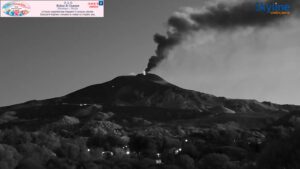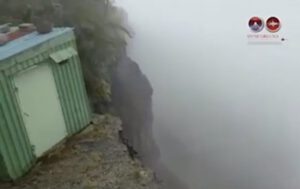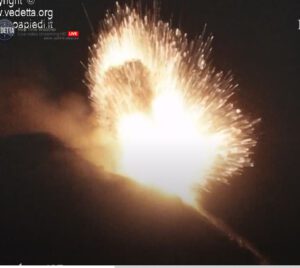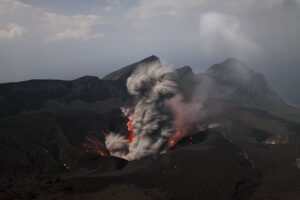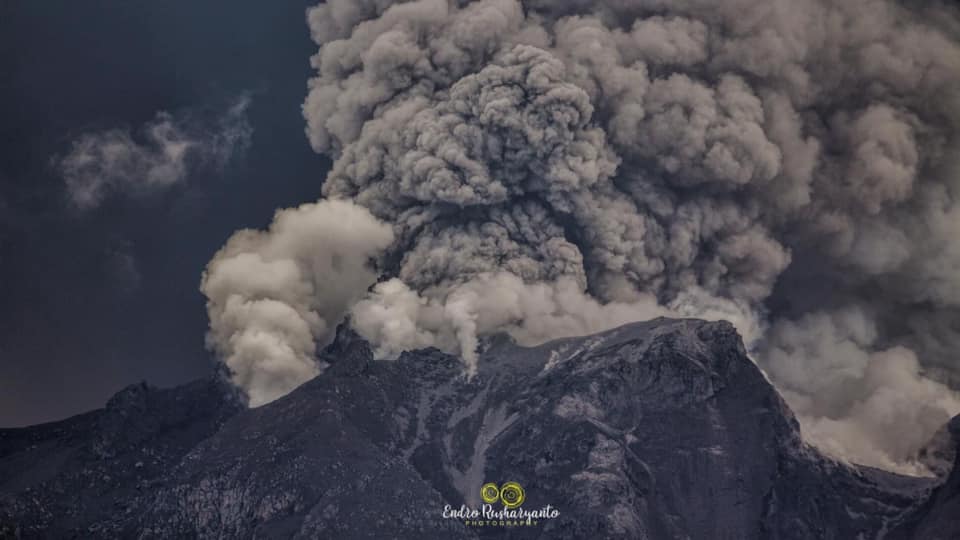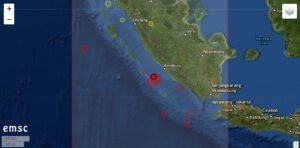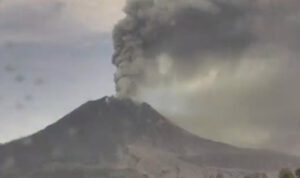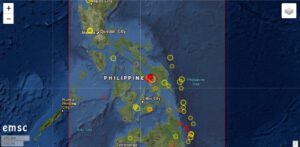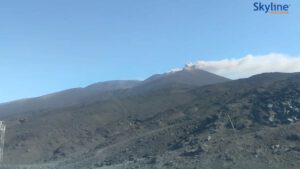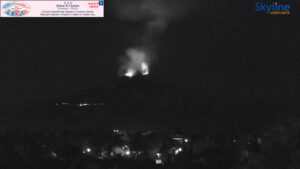 Update 15:00: Apparently there was an episode of increased activity tonight that also involved the Northeast Crater. A livecam image shows a double lava fountain from New South East Crater and Northeast Crater.
Update 15:00: Apparently there was an episode of increased activity tonight that also involved the Northeast Crater. A livecam image shows a double lava fountain from New South East Crater and Northeast Crater.
Original message: In the last hours the Etna tremor has increased significantly and is now moving in the red zone. At the same time the LGS upgraded the automatically generated pre-warning level to “orange”. Since yesterday noon, more and more signals in the infrasonic range have been detected. They occasionally have a relatively high acoustic pressure of 3-4 bar and come from the direction of the New South East Crater. On the livecam this morning you can only see steam rising. But it is only moderately windy, so I do not assume that the measured values are falsified by the wind. In fact, yesterday hikers walking on the rim of Bocca Nuova observed the sudden onset of an ash eruption from the saddle vent of New South East Crater. Satellite images show ash emissions from the New South East Crater and a thermal anomaly in the Northeast Crater. I wouldn’t be surprised if we would see some activity here in the next weeks.
